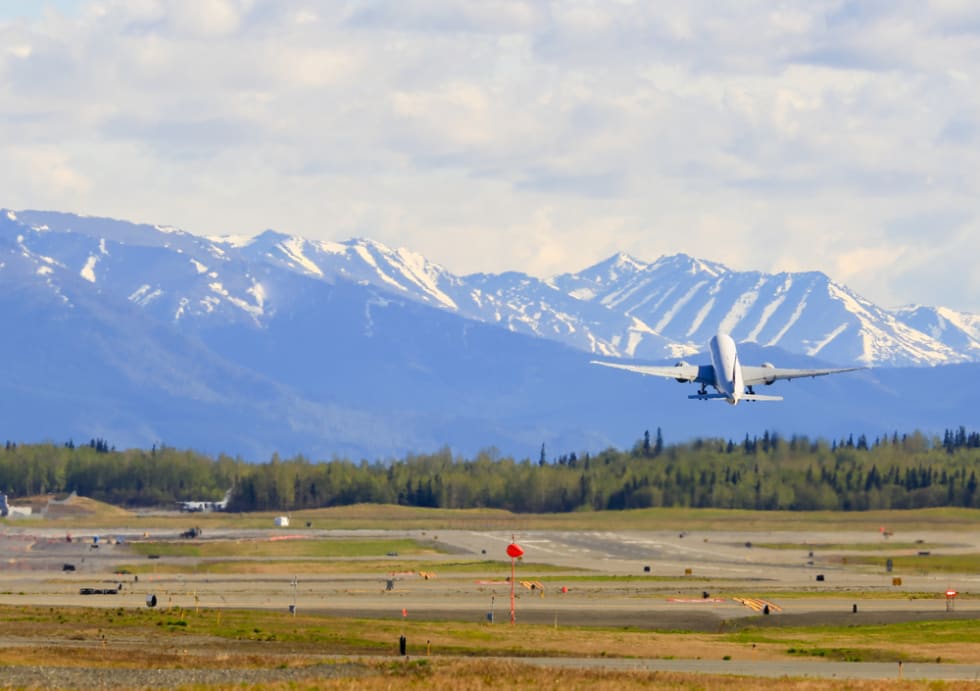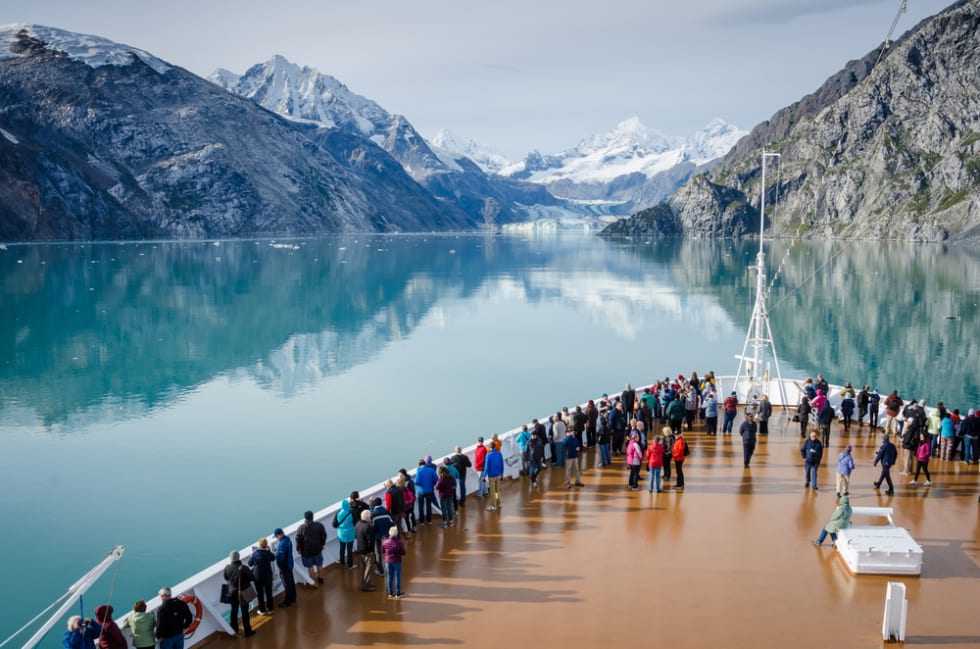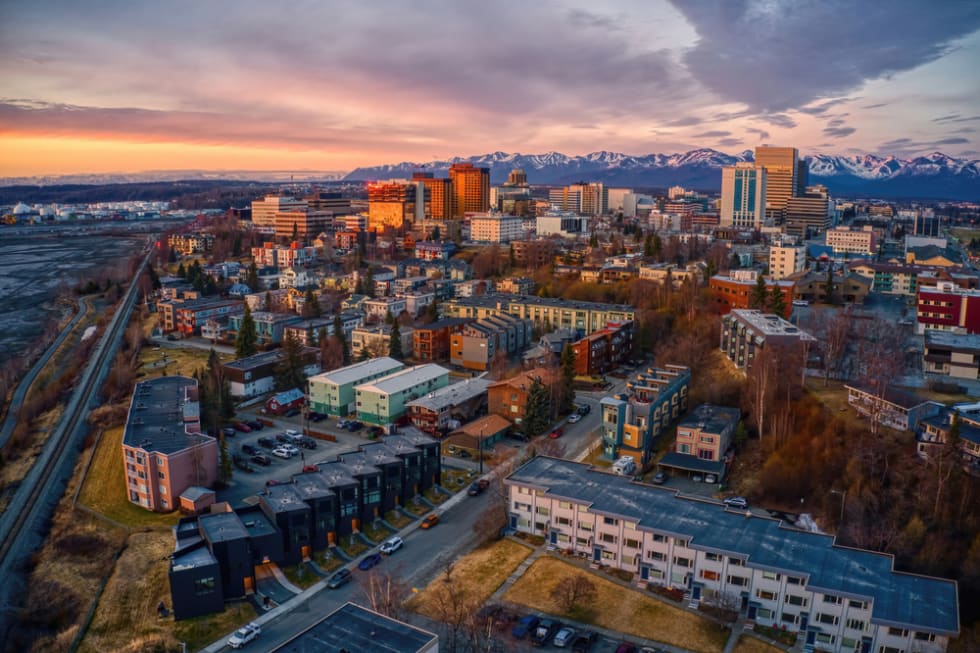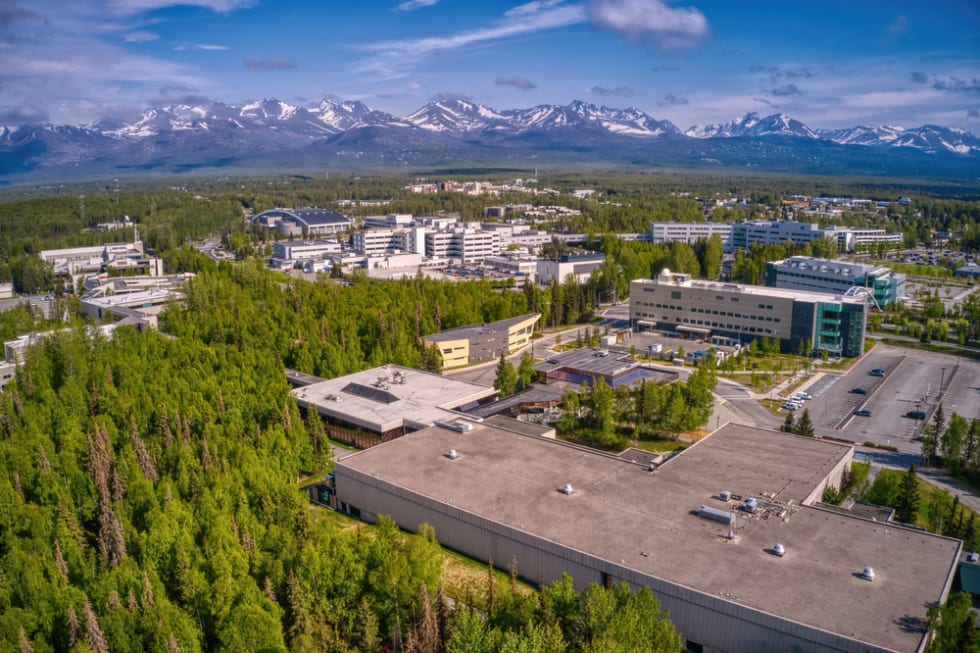Admirals Cove
- 5 units available
- 2 bed
- Amenities
In unit laundry, Patio / balcony, Granite counters, Dishwasher, Pet friendly, 24hr maintenance + more

Alaska has been named The Final Frontier, and although it’s known for its freezing winters, it offers much more to those who call it come. Whether you’re a nature enthusiast, pine for the Northern Lights, or the charming appeal of Alaska, it’s an excellent place for anyone brave enough to withstand the weather year-round.
So, if you’re ready to pack up and move to Alaska, here’s what to know before you go.
Alaska is the largest state in the country by a landslide, with a total area of more than the combined area of the following three largest states (Texas, California, and Montana). Yet, despite its size, Alaska is the third least densely populated state, with only 732,673 residents. Across the state, nearly half of the population resides within the Anchorage metropolitan area.
Only 16% of Alaskan residents speak a non-English language, but 5% of that population speaks one of the 20 indigenous languages of the state, including Inupiaq, Siberian Yupik, and Central Alaskan Yup’ik.
Located on the northwest extremity of North America, Alaska borders the territory of Yukon and the Canadian province of British Columbia. Just across the Bering Strait, Alaska shares a maritime border with the Russian Federation’s Chukotka Autonomous Okrug to the west.
Due to the expansive size of the state, the climates vary in different regions of Alaska. The northern areas of Alaska are in a subarctic oceanic climate, while the south and southeastern regions are in a mid-latitude marine climate. The warmest region of the state is in the southeast area, with higher precipitation throughout the year and milder winter temperatures.
Alaska isn't the most affordable place to live in the U.S. While the cost of living is by no means excessive, it’s not the cheapest. However, it's possible to find a reasonable cost of living depending on where you live. The overall cost of living in Alaska is 125.8, more than the US average of 100. Try using our rent calculator to estimate how much to spend on rent.
Using the most densely populated city within the state capital, Anchorage, as an example, according to Payscale, the cost of living in Alaska is 28% higher, and housing is 47% higher than the national average.
Here’s an idea of how much things cost when moving to Alaska, as reported by Payscale:
Major cities like Anchorage are the most expensive. However, you can still find rent specials or team up with roommates if needed.
The state capital, Juneau, is the second-largest city in the country in size but falls short in the population of both Anchorage and Fairbanks. Juneau is a small, relaxed town, perfect for anyone looking for community, beautiful scenery, and the great outdoors. Research shows that the average monthly net salary in Juneau is $5,156.25. Additionally, the average cost of a meal at an inexpensive restaurant in the city is $18.00.
Median rents in Juneau stand at $1,295 for a one-bedroom and $1,385 for a two-bedroom. That's above the national average of $1,101 for a one-bedroom.
Fairbanks is the coldest city in the interior region of the state, yet the second most populated, behind none other than Anchorage. Known as the “Golden Heart City,” Fairbanks boasts plenty to explore, a thriving population, rich history, and diverse culture.
While the cost of living in Fairbanks is expensive, it is more reasonable than in Anchorage and Juneau. However, it still comes at a premium. Research shows that the average monthly net salary in Fairbanks is $3,666.67. Additionally, the average cost of a meal at an inexpensive restaurant in the city is $20.00.
Fairbanks' median rents stand at $1,100 for a one-bedroom apartment and $1,475 for a two-bedroom. Of course, the closer to a major city you get in Alaska, the more you will pay rent.
Alaska offers family-friendly parks, outdoor spaces, and natural areas. There's always something to do or see in The Final Frontier.
Kenai, King Cove, and the North Pole are among the most affordable cities for families in Alaska. However, depending on where you live, schools can be an issue. So, it may take some creativity to find the right district.
Alaska has no income tax or statewide sales tax, though counties will impose a sales tax rate. For example, Anchorage has no sales tax, Juneau has a 5% sales tax, and Fairbanks has a 5.5% sales tax.

Compared to other similarly sized metropolitan areas across the country, Anchorage has a healthier job market. Thankfully, the average annual salary in Anchorage is currently $60,020, above the national average of $53,490. Additionally, the unemployment rate is currently 7.6%, above the national average of 8.1%.
In Alaska, Anchorage serves as the state’s commercial and industrial hub. Oil is the primary industry in Anchorage, though people also find jobs in government, air transportation, leisure and hospitality, and healthcare.
The biggest employers in Anchorage include Ted Stevens International Airport, Providence Alaska Medical Center and Hospital System, and Fort Richardson U.S. Army Base.
A few public transportation options are available throughout Alaska, including bus lines, railroads, trains, and private transfers. The largest public transit provider in the state is People Move, a division of the Municipality of Anchorage’s Public Transportation Department (PTD).
While Uber and Lyft are also widely available in more densely populated regions, relying on these options in rural areas might be challenging.
Car culture is strong throughout The Final Frontier, as it’s tricky to get around without one. The good news is, once you get out of the cities, driving could turn into a favorite pastime around Alaska. Since there’s no shortage of beautiful nature around you, most drives will include scenic views of the Alaska, Coast, Brooks, or Aleutian mountain ranges.
Alaska weather is not why many people move there. In Anchorage, winters are partly cloudy, snowy, freezing, and long. The coldest city in Alaska is Barrow, located at the very northern tip of the state. The average low in Barrow is -14°F and the average “high” of -3°F.
There are some minor variations in weather across the state, with the warmest city being Sitka. Winters in Sitka rarely drop below 22°F, with the annual average temperature ranging from 33°F to a cozy 62°F.

Alaska is a playground for attractions, from national parks, museums, historical landmarks, etc.
Alaska is home to eight national parks boasting true, untouched wilderness. Two of the most popular national parks in Alaska are Glacier Bay National Park and Denali National Park.
One of the world’s largest international protected areas spans 25 million acres and is known as the World Heritage Site. 3.3 million acres of this land is Glacier Bay National Park, with everything from deep sheltered fjords to wild coastlines, temperate rainforest, rugged mountains, and dynamic glaciers.
You can find the tallest peak in North America, standing at 20,310 feet, within Denali National Park. This national park spans six million acres features one road running through it and wild animals of all sizes roaming free through the land.
In addition to national parks, Alaska is also home to 160 museums across its big cities and villages. The most famous museums in Alaska include the Anchorage Museum at Rasmuson Center and the Alaska Aviation Heritage Museum.
The biggest museum in Alaska is the Anchorage Museum at Rasmuson Center. Situated in the heart of Anchorage, you’ll find science, ecology, ethnography, history, and art. The museum's primary purpose is to display the history, art, people, and land of Alaska.
Another famous museum located in Anchorage is the Alaska Aviation Heritage Museum. This museum preserves, displays, and honors Alaska’s aviation history, with over thirty aircraft on display.
Across the state of Alaska, you will find 50 historical landmarks covering everything from gold-rush mines to World War II bases and everything in between. Some of the most popular national historic landmarks in Alaska include Kennicott Mine and Ghost Town and the Oscar Anderson House.
Established in 1903, the Kennicott Mine and the surrounding community became a ghost town only 35 years later. Today, the ghost town offers tours teaching you about life in this small mining town in Alaska.
Oscar Anderson was n important figure in Anchorage’s history. For anyone looking to take a step back and see what life was like in the early 1900s in Anchorage, a visit to the Oscar Anderson House will shed light on it.
From unbeatable coastlines and picturesque mountain ranges, Alaska truly has it all. Here are some of the things you must do while living in this state.
The Alaska Railroad connects the state’s major areas, including Spencer Glacier, Denali National Park, Fairbanks, Anchorage, and more. Completed in 1923, today, the railroad boasts large picture windows or glass dome ceilings, depending on your tickets.
The Mendenhall Glacier is famous for being one of the most easily accessible glaciers in the state. You can watch a short film at the visitor center, check out the wildlife exhibits, or grab a book from the bookstore operated by Discovery Southeast.

While Alaska's melting pot of cultures offers something for everyone, fresh fish is one of the best things you can find across the state. Some of the local favorite spots in Anchorage include Glacier Brewhouse, South Restaurant + Coffeehouse, and Snow City Cafe.
You’ll find plenty of restaurants and bars, many of which provide live entertainment in the evenings. In addition, downtown Anchorage has a plethora of good eats, all within walking distance from one another. Some top spots include 49th State Brewing Company, Ginger, and Tequila 61.
The Great Alaska Mall in Anchorage is one of the biggest malls in the city. The mall includes everything from local gift shops to boutiques, supermarkets, and department stores.
With such a tight-knit community, it’s no surprise that Alaska i has major events throughout the year, including:
Anchorage Folk Festival - enjoy free jam sessions, workshops, and performances during this folk festival every January.
Alaska Beer Week is a weeklong event that has turned into a month-long one; locals and visitors can enjoy a rotating schedule of hops-fueled fun every January.
Fur Rendezvous - enjoy pure Alaska fun with a fireworks show, snow sculpture competition, carnival, and more during Anchorage’s annual February tradition.
Iditarod Trail Sled Dog Race - early March brings the Iditarod Trail Sled Dog Race, with some of the best flocking to downtown Anchorage.
Summer Solstice Festival - what better way to bring in the longest day of the year in June than with a Summer Solstice Festival?
PrideFest - every summer, Anchorage celebrates its LGBTQ communities with a Pride Parade through the downtown streets.
Fourth of July - Independence Day is celebrated big in Alaska, with a carnival and parade in the heart of downtown Anchorage.
When it comes to sports in Alaska, you will find numerous minor league and semi-professional teams, especially in Anchorage. Unfortunately, there are currently no professional sports teams based in Alaska.

There are four accredited universities in Alaska, including Alaska Pacific University, the University of Alaska Southeast, the University of Alaska Fairbanks, and the University of Alaska Anchorage.
Alaska's best city to move to depends on your lifestyle preferences, career aspirations, and budget.
Moving to Anchorage is ideal if you work in hospitality or government agencies and want access to more metropolitan amenities and culture. Just remember, living in the most densely populated city within any state comes at a cost.
You can anticipate a small-town feel wherever you choose to live in Alaska. However, if you’re looking to ditch the city entirely and live in a smaller community, check out other popular cities like Juneau or Fairbanks.
Ready to move and live off the land, enjoy the riches of flora and fauna, or thrive in a chill city vibe, but unsure about the cost of living in Alaska? Hopefully, you’ve got a better idea and can start searching around in some of your ideal cities.
Register for Apartment List to find your perfect neighborhood and apartment in Alaska.
The coldest city in Alaska is Barrow, located at the very northern tip of the state. The average low in Barrow is -14°F and the average “high” of -3°F. The warmest city is Sitka, with the annual average temperature ranging from 33°F to a cozy 62°F.
Alaska is covered by two time zones: Alaska Daylight Time (DST) and Greenwich Mean Time - 8 (GMT-8), which is four hours behind New York City. The other time zone in Alaska is Hawaii-Aleutian Daylight Time, which is also Greenwich Mean Time - 9 (GMT-9), or five hours behind New York City.
Alaska’s biggest draw is the pristine outdoors, beckoning outdoor enthusiasts from across the globe. Glacier Bay National Park and Denali National Park are two of the most popular parks in the state among the eight. Alaska is also home to 160 museums, the most notable being the Anchorage Museum at Rasmuson Center.
Alaska is the westernmost and northernmost state in the U.S.
Alaska's sense of community, connection to the land, and magnificent landscape make it an attractive option for college students, millennials, and retirees looking for a desirable place to live, work and play. In short, moving to Alaska offers tons of benefits!
The pros of living in Alaska include small-town charm, access to the Great Outdoors, incredible summer weather, and a thriving job market. The cons of living in Alaska include the harsh winters, susceptibility to earthquakes, higher cost of living, and snow. Every city has its pros and cons.
The best neighborhoods in Alaska are Anchorage, Juneau, and Fairbanks.
Due to the expansive size of the state, the climates vary in different regions of Alaska. The northern areas of Alaska are in a subarctic oceanic climate, while the south and southeastern regions are in a mid-latitude marine climate. The warmest part of the state is in the southeast area, with higher precipitation throughout the year and milder winter temperatures.
Alaska has no income tax or statewide sales tax. Some counties will impose a sales tax rate, though. For example, Anchorage has no sales tax, Juneau has a 5% sales tax, and Fairbanks has a 5.5% sales tax.
Oil is the primary industry in Anchorage, government, air transportation, leisure and hospitality, and health care.
There are four accredited universities in Alaska, including Alaska Pacific University, the University of Alaska Southeast, the University of Alaska Fairbanks, and the University of Alaska Anchorage.
There are plenty of things to do in Alaska, whether you like spending your time exploring year-round events or getting outside and being one with nature. Or, if you consider yourself a bit of a foodie, the downtown scene in Anchorage will not disappoint.

In unit laundry, Patio / balcony, Granite counters, Dishwasher, Pet friendly, 24hr maintenance + more
In unit laundry, Patio / balcony, Dishwasher, Pet friendly, 24hr maintenance, Garage + more